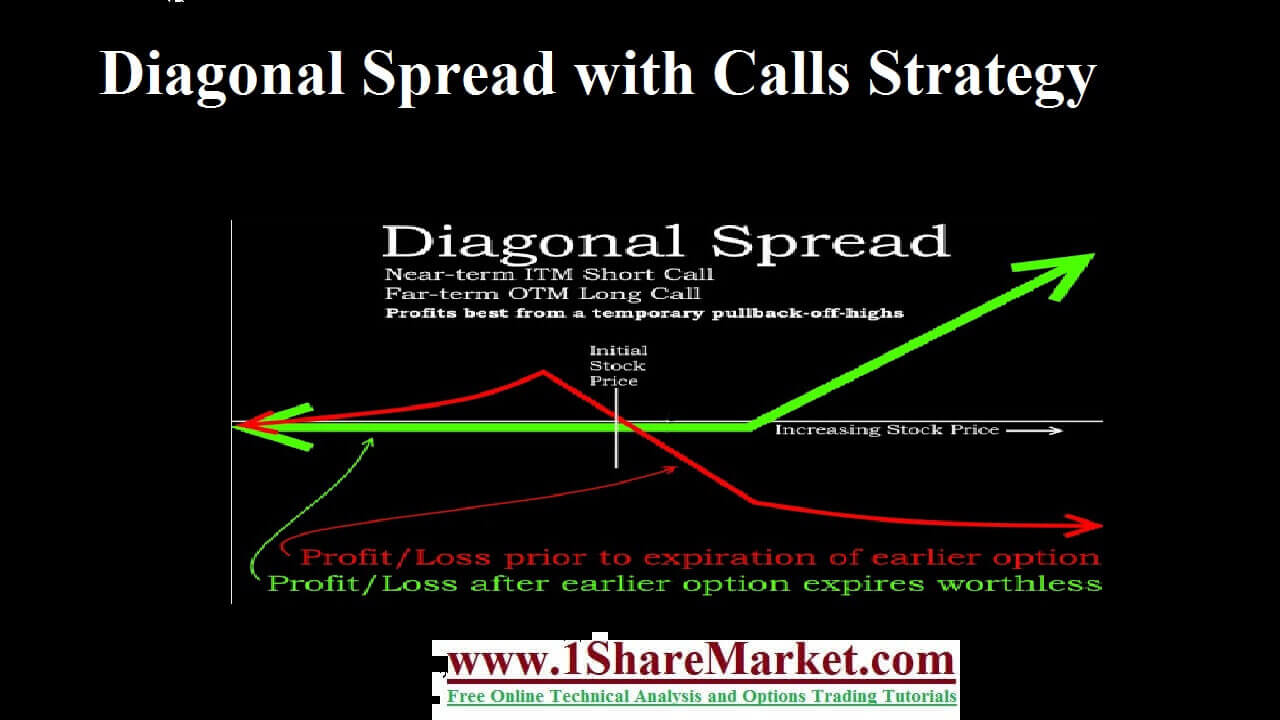In this Diagonal Spread with Calls Strategy the forecast is for a stock price near the strike price of the short call. They have profit from the time decay of the short call. The long calendar spread with the call is called a long diagonal spread that will earn a profit if the stock rises above the strike price of the short call. The tradeoff is called a long diagonal spread that cost more than a long calendar. And if the strategy is compared to vertical spread both calls will have the same expiration date. The difference between the two strategies is an initial investment, profit, loss available at expiration. The long diagonal will cost more to establish because the long call has higher price than the same-strike. Patience and trading discipline is important in trading long diagonal spread. The diagonal with a call is made by buying one long-term call at a lower strike and selling a short-term call at a high strike price. When one short-term call expires the trader sells another short-term call set to expire. The strategy will lean bullish/bearish depending on the structure of the options.
This strategy is called a diagonal spread because it will combine a horizontal spread called a time spread that represents the difference in expiration date with a vertical spread with a difference in strike prices. They are listed in a matrix of strike prices and expiration dates. The option used in vertical spread strategies is listed in the same vertical column with the same expiration dates. The options in a horizontal spread strategy use the same strike prices with different expiration dates. They will use diagonal spread in different strike prices and expiration day. The options are arranged diagonally in the quote grid.
As the first ABC is trading $100 and expected to trade at a high over the next four months a trader can buy the June 100 call for $4 and sell the April 105 call for $1.25 which results in an initial cost of $2.75.The stock trades up to $103 by April expiration then the April call is removed from the account, and the trader makes again on the long call. They can sell a May 105-strike call for $1.75. So if the stock trades up to $105 by May expiration, the trader will bank the $1.75 and have $5 of intrinsic value in the long-term call. They will sell a June 110 call for $1.25 so stock trades up to $108 by June expiration, then the June calls will expire worthlessly. Trade pay is the premium of $2.75 to open the trade and pocked premium of $1.75 and $1.25. They will have $8 of intrinsic value in the stock. This would result in a total profit of $8.25.So if the stock fell to $90 after the initial trade both options will drop too much in value after making forward move with the strategy impossible. If the stock never trades high the options would expire worthlessly and the trader will lose their $2.75.
view more
Maximum profit = premiums received from selling short-term upside calls-minus the initial premium to execute the trade+ stock price- strike price on the final month.
Maximum loss= limited to the cost of the trade.
The trade is dynamic with many possible scenarios and future trades. So it’s impossible to calculate a breakeven.
The strategy is advanced that sets to capitalize on short-term higher volatility. They work best if the stock trades up slowly over time. They are tricky when the strategy is about capturing volatility.
© 2020 All rights reserved My blogs (Posts) and videos is only educational purpose on stock market and depend on my self research and analysis. I can't advice to buy/sell any stock. because I'm not SEBI registered.If someone wants to inter the stock market, then my advice is first learn from an authorize institution or take advice from your authorized adviser.
Design by
Sraj Solutions Pvt. Ltd. Additional Services : Refurbished Laptops Sales and Servise, Python Classes And SEO Freelancer in Pune, India